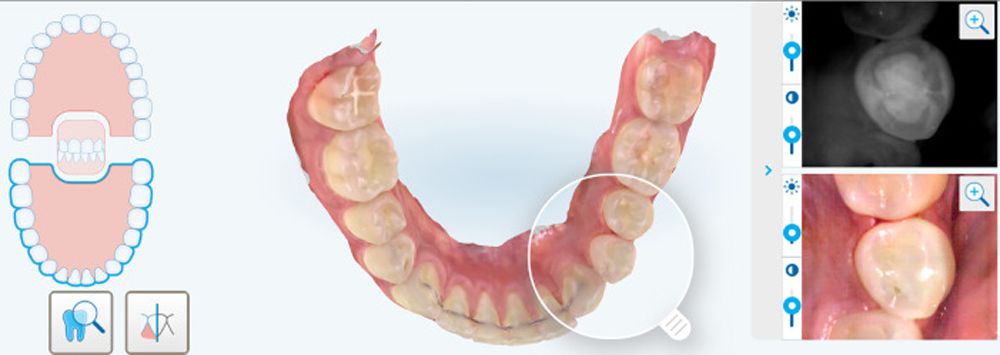Study Finds iTero Element 5D Imaging System Effective at Caries Detection
This study demonstrated the iTero Element 5D’s usefulness in detecting interproximal caries and lesions, and its potential future use.
Study Finds iTero Element 5D Imaging System Effective at Caries Detection

A new study sponsored by Align Technology has demonstrated that the iTero Element 5D imaging system is an effective tool in detecting and monitoring interproximal caries lesions above the gingiva. The iTero Element 5D system is unique in its ability to use near infra-red technology (NIRI), which eliminates the need for bitewing radiography, thus eliminating exposure to radiation.
The study, which was titled “Reflected near-infrared light versus bite-wing radiography for the detection of proximal caries: a prospective clinical study conducted in private practices,” took place across 5 different dental clinicals in Germany and Canada, and covered about a total of 100 patients. In the study, intraoral scans were taken on these patients using the iTero Element 5D system and NIRI technology. The scanner is able to capture scans of the interal tooth structure, as well as 3D color images of dentition. These scans were then compared with results from traditional bitewing radiography, and NIRI was found to be more sensitive in the detection of early enamel lesions, and comparable in detecting dentinal lesions. The iTero NIRI technology was found to be 66% more sensitive than bitewing x-rays for interproximal lesions detection, demonstrating the potential clinical power, according to study participant Dr Peggy Brown.
“As a current user of the iTero Element 5D imaging system, participating in the study was very beneficial to me. I could further see the clinical value of the iTero Element 5D imaging system through its high sensitivity at detecting early enamel lesions and ease of use,” Dr Brown said in a press release from Align. “Having 1 system, 1 scan, and 1 tip eliminates the need for multiple devices, repetitive sterilization, and minimizes the use of harmful radiation.”
The results demonstrated a high accuracy detection of p<0.0001 for early enamel lesions and carious lesions in the dentino-enamel junction. The study also took a look at NIRI and bitewing radiography in visual caries debridement, in which NIRI technology was more sensitive overall. These results could lead to a better understanding on detecting proximal caries, and to a safer option for both practitioner and patient, according to lead study author and professor at the Departments of Oral Biology and Endodontology at the Goldschleger School of Dental Medicine in Tel Aviv Dr Zvi Metzger.
“Reflected near infra-red light images generated simultaneously during 3D scanning of dental arches with the iTero Element 5D imaging system scanner may be used reliably for detection, screening and monitoring of proximal caries,” Dr Metzger said in the press release.“This method for caries detection may potentially minimize the traditional use of ionizing radiation.”
The study was published in the peer-reviewed Journal of Dentistry on October 24, 2021.